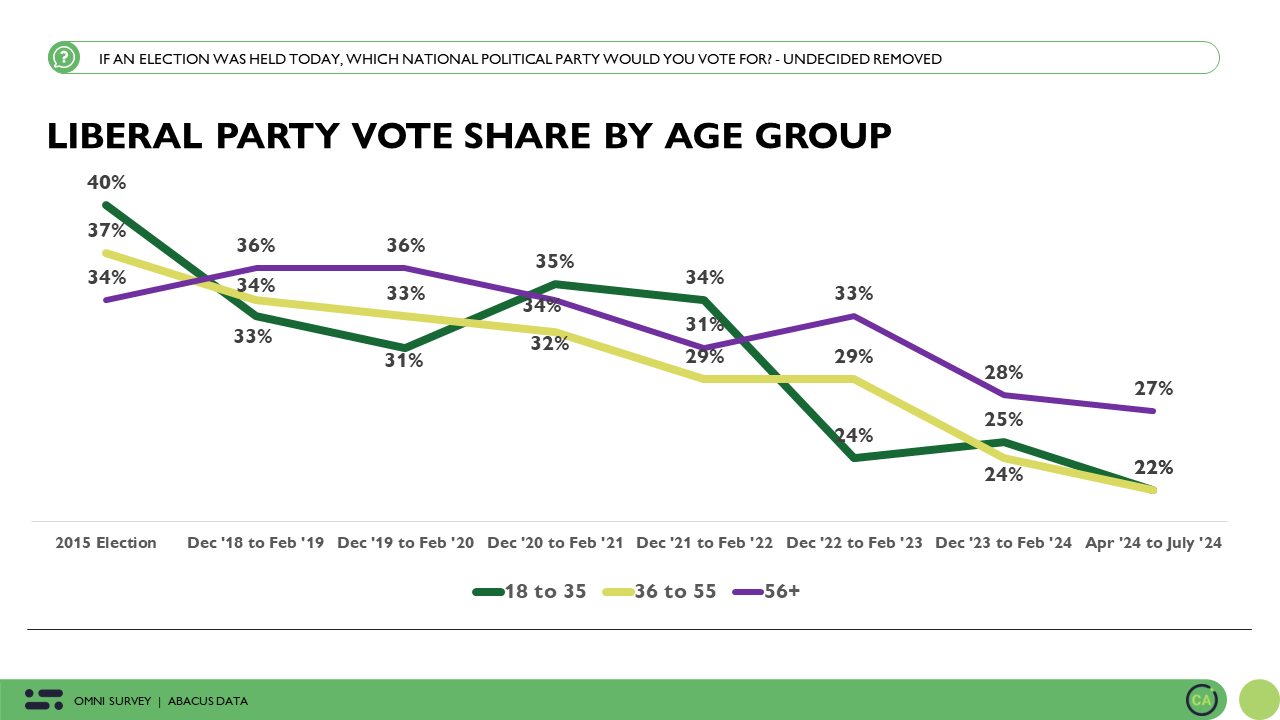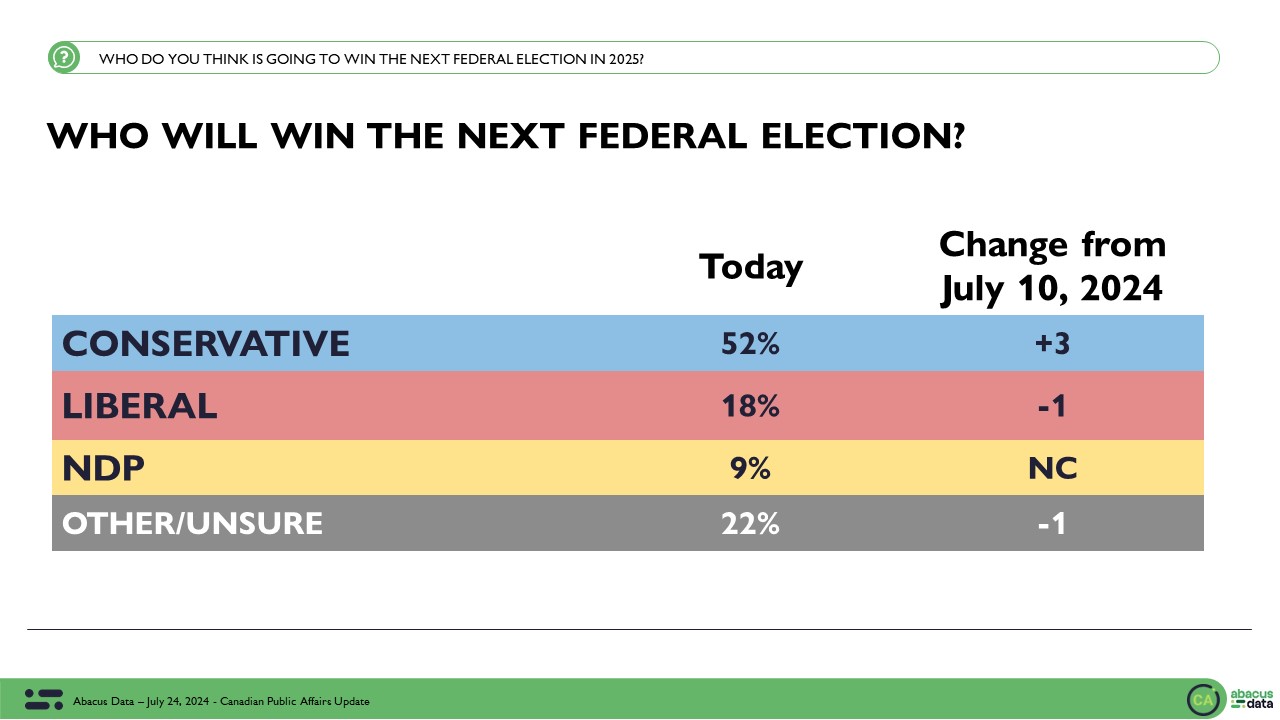Desire for change intensifies, and battle for “change vote” tightens
September 14, 2015

The mood of the country continued to deteriorate and the desire for change grew since our last wave of surveying. Today, just 32% say the country is heading in the right direction, a drop of 18 points since last December and the lowest we have measured since we began tracking this item in March 2014. This is the first time since that tracking began that more people say the country is on the “wrong track” than say it is heading in the right direction.
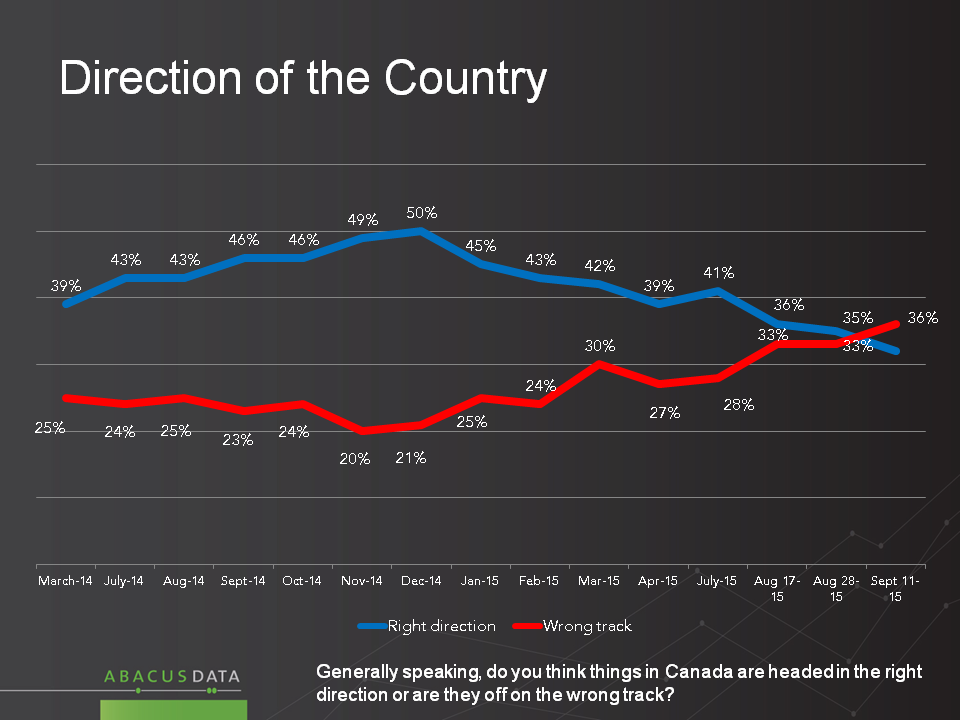
The desire for change in Ottawa has also hit a new high, with 61% saying they “definitely think it’s time for a change”, up from 50% in April of this year. Another 15% are inclined to want change meaning a total of 76% of voters would prefer to see a different party take office at the conclusion of this election. Only 17% are sure that they want the Conservatives to remain in power, with another 7% inclined to want this outcome.
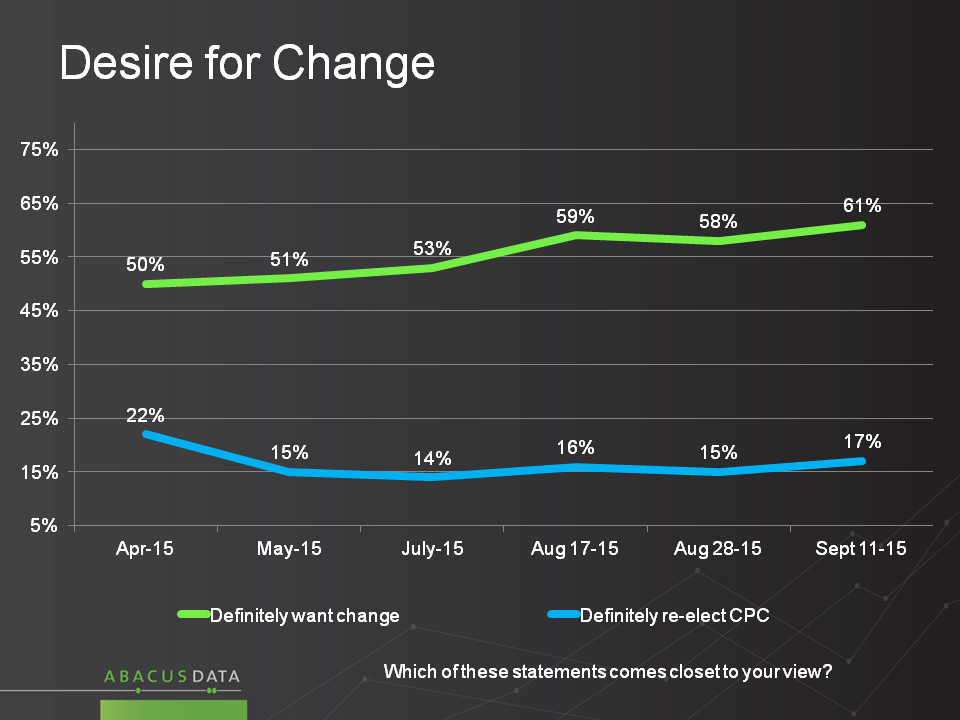
Current Voting Intention
The incumbent Conservatives find themselves in the middle of an intense 3-way battle for support. In terms of current voting intentions, we see the NDP at 31% and the Liberals and CPC both registering 29%. For all intents and purposes these levels of support are identical, and have only changed one point since our last survey, when the Liberal Party registered 28%.
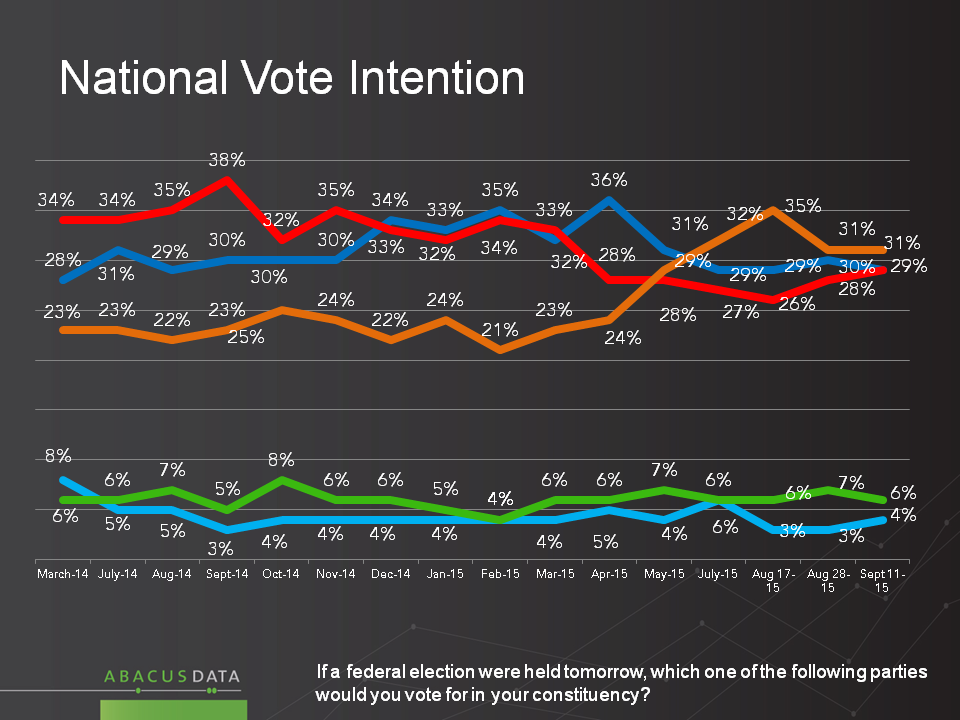
In Ontario, we see a close two-way race between the Conservatives and the Liberals with the NDP having fallen back a bit. In Quebec, the NDP continues to lead by a wide margin. In BC, the Liberals appear to have picked up a bit of ground and a 3-way fight is evident again.

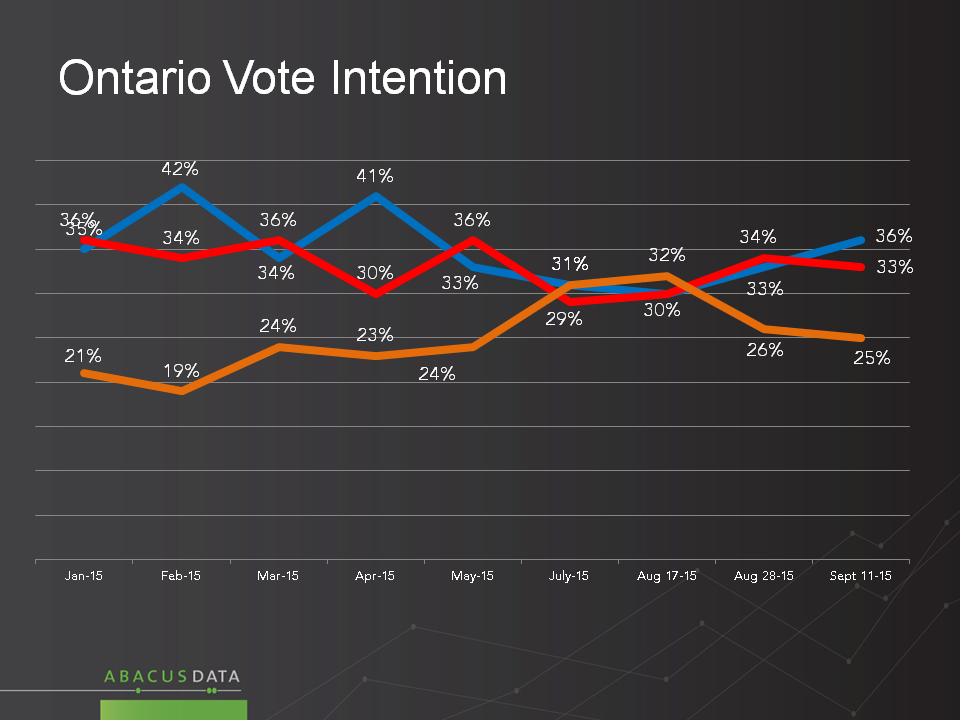
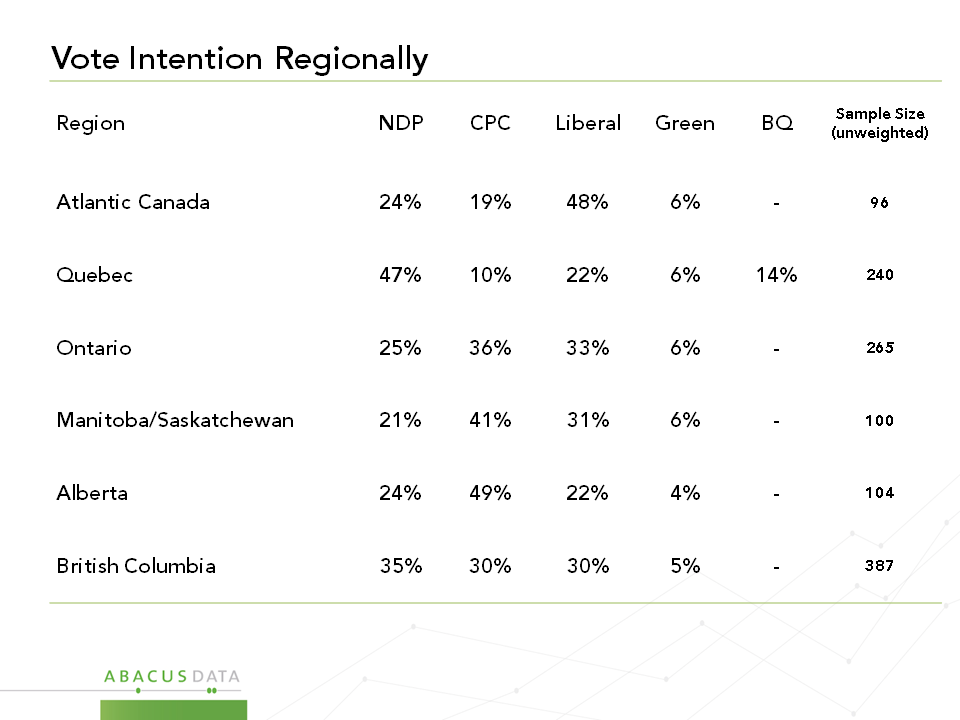
Accessible Voter Pools
One area where we have seen some shifting is in the size of the accessible voter pools for the parties. We note a 6-point drop in the number of people who would consider voting NDP, bringing their voter pool to a level about the same as that of the Liberal Party (NDP 56%, LPC 54%). Both parties enjoy consideration by substantially more voters than does the Conservative Party. Only 41% now say they would consider voting Conservative, down 7 points from April of this year.

Firmness of Voting Intentions
In terms of the firmness of voting intentions, there continues to be a lot of evidence of fluidity. Only 31% are sure of how they will vote, the rest are not.
Half (49%) of the current CPC vote (meaning about 15% overall) is locked in and won’t change, as is 38% of the Liberal vote and 29% of the NDP vote.

Battle for the Change Vote
Finally, perhaps the most interesting finding to draw attention to in this series of numbers is the voting intention among voters who are most passionate about change. This battle for the change vote is a key element of this campaign.
At one point, in mid August, he NDP a 12-point lead over the Liberals within this group. Today, the two parties are tied (34-33 with 19% undecided). In Quebec, the NDP leads by 22% among those who definitely want change. In Ontario, the Liberals lead by 9 points.

The Upshot
Tomorrow, we’ll release data on the evolving perceptions of the main party leaders.
These numbers released today indicate that the Conservatives are holding on to a competitive position, but continue to face headwinds in terms of a deteriorating mood and a growing desire for change. The NDP have softened a bit in the last few weeks, and the Liberals have re-established themselves as serious contenders.
The battle to become the vehicle of choice for change voters may determine the outcome of the election: if the NDP and the Liberals split equally, this can help the Conservatives, however if one or the other emerges as a dominant choice in large-seat regions, the math works poorly for Conservative incumbents. Increasingly we need to be watching the races in BC, Ontario and Quebec, as each has its own unique dynamic, and the potential to swing a lot of seats from one column to another.
Methodology
Our survey, commissioned by Abacus Data, was conducted online with 1,500 Canadians aged 18 and over from September 9 to 11, 2015. A random sample of panelists was invited to complete the survey from a large representative panel of over 500,000 Canadians, recruited and managed by Research Now, one of the world’s leading provider of online research samples.
The Marketing Research and Intelligence Association policy limits statements about margins of sampling error for most online surveys. The margin of error for a comparable probability-based random sample of the same size is +/- 2.6%, 19 times out of 20. The data were weighted according to census data to ensure that the sample matched Canada’s population according to age, gender, educational attainment, and region. Totals may not add up to 100 due to rounding.
Abacus Data Inc.
We offer global research capacity with a strong focus on customer service, attention to detail and value added insight. Our team combines the experience of our Chairman Bruce Anderson, one of Canada’s leading research executives for two decades, with the energy, creativity and research expertise of CEO David Coletto, PhD.



